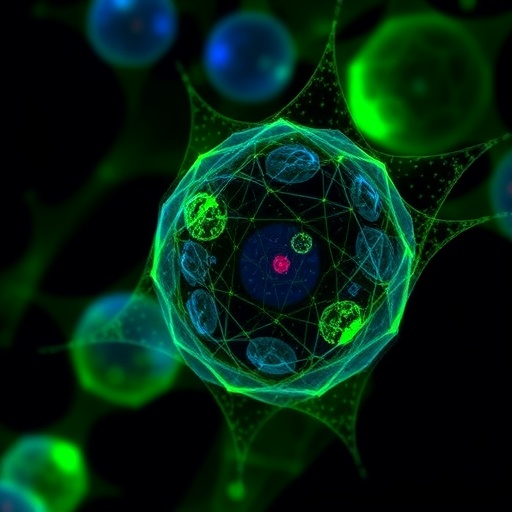This news release is available in German.
Stem cells have two important capabilities: they can develop into a wide range of cell types and simultaneously renew themselves, creating fresh stem cells. Using a model of the blood forming (hematopoietic) system, researchers at the Technical University of Munich (TUM) have now been able to precisely determine, which signaling pathways play an essential role in the self-renewal of blood stem cells. A particularly decisive role in this process is the interactive communication with surrounding tissue cells in the bone marrow.
Our blood is generated by blood-forming (hematopoietic) stem cells (HSCs) in the bone marrow. In conjunction with bone marrow tissue cells, these HSCs form a microenvironment known as a niche. As long as the body is healthy, the HSCs remain in "standby" mode. But if an accident leads to substantial blood loss, for instance, or the defense against a pathogen requires more blood cells in the course of an infection, the stem cells are activated.
In response, the entire blood cell formation system switches from standby into a state of alert. The activated stem cells generate new blood cells of every type to counteract the blood loss or combat the pathogen. At the same time, self-renewal keeps the stem cell pool replenished.
This switch is accompanied by a complex communication process between the stem cells and tissue cells – an area that had not previously been examined in any depth. "In our study, we set out to establish which tissue signals are important to stem cell maintenance and functionality, and which HSC signals influence the microenvironment," explains Prof. Robert Oostendorp from TUM's university hospital, Klinikum rechts der Isar, where he works at the III. Medizinische Klinik led by Prof. Christian Peschel. Together with team members Dr. Rouzanna Istvánffy and Dr. Baiba Vilne, Oostendorp used mixed cultures of tissue and stem cells to investigate how the two cell types interact.
Tissue cells trigger stem cell renewal
To unravel the complex signaling pathway map, the scientists used their own findings from the analysis of factors regulated up or down in the interplay between tissue and stem cells, linking them with the signaling pathways described in existing literature. They then consolidated this information within a bioinformatics computer model. To achieve this, the researchers collaborated with a group led by Prof. Hans-Werner Mewes, TUM's Professor of Genome-Oriented Bioinformatics. Finally, the team conducted extensive cell experiments to confirm the computer-generated signaling pathway model.
"The outcome was very interesting indeed: the entire system operates in a feedback loop," reveals Oostendorp. Summing up the results, he continues: "In alert mode, the stem cells first influence the behavior of the tissue cells – which, in turn, impact on the stem cells, triggering the self-renewal step."
Important ramifications also for leukemia treatment
The team's findings paint a clear picture: in alert mode, the stem cells emit signaling substances, which in turn induce tissue cells to release the connective tissue growth factor (CTGF) messenger. This is essential to maintain the stem cells through self-renewal. In the absence of CTGF, the stem cells age and cannot replenish.
"Our findings could prove significant in treating leukemia. In this condition, the stem cells are hyperactive and their division is unchecked," describes Oostendorp. "Leukemic blood cells are in a constant state of alert, so we would expect a similar interplay with the tissue cells." To date, however, the focus here has been limited to stem cells as the actual source of the defect. "Given what we know now about feedback loops, it would be important to integrate the surrounding cells in therapeutic approaches too, since they exert a strong influence on stem cell division," the scientist confirms.
###
Publication
R. Istvánffy, B. Vilne, C. Schreck, F. Ruf, C. Pagel, S. Grziwok, L. Henkel, O. Prazeres da Costa,
J. Berndt, V. Stümpflen, K. S. Götze, M. Schiemann, C. Peschel, H.-W. Mewes, R.A.J. Oostendorp, Stroma-derived connective tissue growth factor (CTGF) maintains cell cycle progression and repopulation activity of hematopoietic stem cells in vitro, Stem Cell Reports, October 29, 2015.
DOI: 10.1016/j.stemcr.2015.09.018
Contact
Prof. Robert Oostendorp
Klinikum rechts der Isar, Technical University of Munich
III. Medizinische Klinik
Phone: +49 (0)89 4140-6056
[email protected]
http://www.med3.med.tum.de/team/Oostendorp.html




